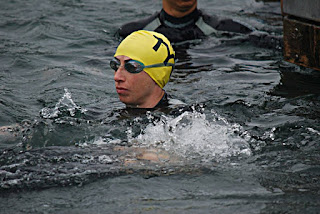- affecting our level of alertness, reaction time and other cognitive functions important for both work and athletic performance.
- affecting mood. It can make you irritable and sad, but compounded over time can lead to more serious depression and anxiety issues.
- altering hormone levels in our body that are important for maintaining healthy body weight. Cortisol (the stress hormone) is increased which can affect metabolism and ability to burn fat. Leptin (which makes you feel full), and Ghrelin (a hunger stimulating hormone) are also altered, which promotes overeating and leads to obesity.
But don’t worry, there are several things you can do to improve your sleep and I’ve listed them here:
1. Bedroom Lights & Electronics:
- Your bedroom should only be used for sleep (and sex). That means no electronics like TVs, DVDs, Laptops, smart-phones, etc. in the bedroom. Use these type of electronics in the living room, not your sleeping space. The light spectrum given off from many of these electronic devices have been proven to disrupt your bodies ability to relax into sleep, tricking your mind into thinking its still daytime. Basically, the blue light from your smartphone makes your brain think its time to wake up, just as you’re getting ready for bed, by suppressing melatonin, your brains sleep hormone (as opposed to red light used in many alarm clocks and night lights, which makes you think its time to sleep).
- Having a smartphone always within hands reach can keep you in a state of constant alertness, much like a milder version of hyper-vigilance experienced by PTSD sufferers, which affects your ability to sleep. Phones can also ring and interrupt your sleep once you’ve drifted off. Do not use your phone as an alarm clock, instead you should go back to your traditional radio alarm clock. They will not disrupt your sleep until its time to wake up in the morning. Do not keep your phone in your bedroom!
- Keep your room dark and free of excess light. Use dark curtains/blinds to block out any light (including street lights, car lights, early sunrises, etc.). You might even consider turning your alarm clock around so the light doesn’t bother you. Sleep blindfolds over your eyes may also be helpful, as well as earplugs if you live in a noisy building or part of town.
- For further info on this topic check out: http://www.medicaldaily.com/why-you-should-disconnect-your-smartphone-after-9-pm-blue-light-blocks-melatonin-leads-poor-sleep, http://acsh.org/2014/02/artificial-light-smartphone-may-disturb-sleep/
2. Winddown Routine:
- Establish a regular routine before bed. This will include going to bed and getting up at the same time daily. Your body will adjust to this routine and fall into a natural circadian rhythm.
- Stop watching TV and using electronic devices at least 30min before bed. Use this time to wind down. You can do some meditation, deep breathing or yoga; take a warm bath; listen to relaxing music; reading (real paperbacks not e-devices).
- Unless you live alone, your partner/family is likely to affect your sleeping habits. Be sure to discuss with them the important of sleep and how certain behaviours may be affecting the quality and quantity of your sleep. Consider creating a family oriented sleep schedule and routine that fits into your family’s lifestyle so that everybody’s needs are considered.
3. Sleep Aids, Food & Drink:
- Temporary use of sleep aids may help you settle down, catch up on needed sleep, and fall into a healthy routine. Sleep aids like melatonin, relora and tryptophan are natural non-habit forming sleep aids that will help you wind down and fall asleep. They can be purchased at most pharmacies.
- Stay away from caffeine containing items in the evening (or afternoon if you’re particularly sensitive). These include coffee, black/green teas, chocolate, energy drinks, etc. A cup of chamomile tea, tart cherry juice or warm milk may help settle you down and are better choices.
4. Naps & Sleeping in:
- If you fall short of your 7-9 hour nightly sleep total don't worry, you can still catch up. Naps in the late morning/afternoon can help recharge your mind and body. Although try not to nap too late in the day (e.g. after 6pm) as it may affect your bedtime.
- Sleeping in on the weekend can also help you catch up on a few hours of sleep deficit, although it may affect your normal sleep routine in the long term. You don’t want to make it a habit, but it can help in the short term.
Remember, sleep is just as important as diet and exercise for your health and fitness. Schedule it in just like any other activity and you will be rewarded both mentally and physically. Good luck & sweet dreams!













